Claude Forthomme's Blog, page 30
May 19, 2014
Too Much "Noise" on the Net: is "milq" the Answer?
We can all agree that we are bombarded with information and that most of it is useless. It's coming at us from all directions: Twitter, Facebook, Google+, LinkedIn, Goodreads, StumbleUpon, Pinterest, Tumblr, online magazines, blogs, the list is endless.
We're deafened with "noise" on the Net.
And in all that "noise", do you find what you want to read? Not often, and when you do, you may try to save or bookmark that gem on your computer but most of the time you just lose it.
That's where milq comes in. Or would like to try to come in.
Instead of a timeline or feed or wall, the way you have it on Facebook, or picture boards like you have on Pinterest, you get "beads", i.e. topics where you can upload your find, whether a video, an article, a song. Their landing page looks like this (my screen shot):
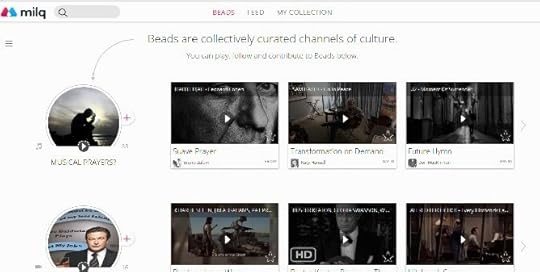
A very minimal design, and easy to navigate. It's also very easy to join, just let the app access your Twitter or Facebook data and you're done.
Is it of any use?
Three weeks ago, the New York Times took note, (see here) and remarked, without really reaching any conclusion, that milq is intended to "separate wheat from social media chaff". That's a nice way to put it, but does it do it?
I tried it from my own standpoint and interests: remember, I'm into books, I like to keep abreast of social trends (how else could I write a book set in the future like Forever Young?).
Well, I was thoroughly disappointed.
Basically, the "beads" are a series of virtual shelves showcasing stuff about the same topic or theme, or to use their exquisite terminology, they are "collectively curated channels of culture". And the stuff uploaded by someone with a big Internet presence gets precedence over the little guy. Also, their business model foresees that they "sell" beads to businesses - for example they've already got Condé Nast interested in topics, sorry, I mean "beads" linked to their magazines.
I tried to find the bead about books and that's where things started to unravel. I stumbled upon a vast series of beads on bizarre topics, all phrased as questions (this apparently is meant to attract people's attention) - here's an example:

"Movies that made me want to become a filmmaker" or "genre stew"? To be honest, I have never seen a film that made me want to become a filmmaker, as to "genre stew"...I'm not sure what that means anyway nor whether I want to waste time to find out (even if some people feel enthusiastic about it).
Finally I found the books bead:

You're told that Pamela Talese created this bead in February of last year and the picture of books surmounted by chocolate candies suggests the bead is going to be yummy.
Wrong, the bead is meant to be...musical! Yes, it is about books but only if expressed in songs: the introductory blurb says it's "about books, their characters, authors, poets, and playwrights. Also-librarians, bookworms, comic-book collectors, folks hooked on the phonics but SONGS ONLY please. There are many fabulous interviews on this topic-but words to music keep the story moving."
This songs-only approach is highly restrictive. Result? Very few posts over a year - maybe a dozen or two dozens, I didn't count them.
Another restriction is that you can only share or comment on the posts, with no hope of response. NO real discussion. This is not a give-and-take forum-like website. Just a place where you collect stuff, the way you collect pictures on PINTEREST - with the possibility of starting your own bead, provided it is highly visual or musical or both - authors addicted to the written word are warned!
Did you try it? If you did, please share your experience!










We're deafened with "noise" on the Net.
And in all that "noise", do you find what you want to read? Not often, and when you do, you may try to save or bookmark that gem on your computer but most of the time you just lose it.
That's where milq comes in. Or would like to try to come in.
Instead of a timeline or feed or wall, the way you have it on Facebook, or picture boards like you have on Pinterest, you get "beads", i.e. topics where you can upload your find, whether a video, an article, a song. Their landing page looks like this (my screen shot):

A very minimal design, and easy to navigate. It's also very easy to join, just let the app access your Twitter or Facebook data and you're done.
Is it of any use?
Three weeks ago, the New York Times took note, (see here) and remarked, without really reaching any conclusion, that milq is intended to "separate wheat from social media chaff". That's a nice way to put it, but does it do it?
I tried it from my own standpoint and interests: remember, I'm into books, I like to keep abreast of social trends (how else could I write a book set in the future like Forever Young?).
Well, I was thoroughly disappointed.
Basically, the "beads" are a series of virtual shelves showcasing stuff about the same topic or theme, or to use their exquisite terminology, they are "collectively curated channels of culture". And the stuff uploaded by someone with a big Internet presence gets precedence over the little guy. Also, their business model foresees that they "sell" beads to businesses - for example they've already got Condé Nast interested in topics, sorry, I mean "beads" linked to their magazines.
I tried to find the bead about books and that's where things started to unravel. I stumbled upon a vast series of beads on bizarre topics, all phrased as questions (this apparently is meant to attract people's attention) - here's an example:

"Movies that made me want to become a filmmaker" or "genre stew"? To be honest, I have never seen a film that made me want to become a filmmaker, as to "genre stew"...I'm not sure what that means anyway nor whether I want to waste time to find out (even if some people feel enthusiastic about it).
Finally I found the books bead:

You're told that Pamela Talese created this bead in February of last year and the picture of books surmounted by chocolate candies suggests the bead is going to be yummy.
Wrong, the bead is meant to be...musical! Yes, it is about books but only if expressed in songs: the introductory blurb says it's "about books, their characters, authors, poets, and playwrights. Also-librarians, bookworms, comic-book collectors, folks hooked on the phonics but SONGS ONLY please. There are many fabulous interviews on this topic-but words to music keep the story moving."
This songs-only approach is highly restrictive. Result? Very few posts over a year - maybe a dozen or two dozens, I didn't count them.
Another restriction is that you can only share or comment on the posts, with no hope of response. NO real discussion. This is not a give-and-take forum-like website. Just a place where you collect stuff, the way you collect pictures on PINTEREST - with the possibility of starting your own bead, provided it is highly visual or musical or both - authors addicted to the written word are warned!
Did you try it? If you did, please share your experience!










Published on May 19, 2014 08:45
May 15, 2014
A New Kind of Fiction for the 21st Century: the Serialized Novel
 Reading in Dickens' time...reading in the subway (Claude's painting on right; 19th C. French painting on left)
Reading in Dickens' time...reading in the subway (Claude's painting on right; 19th C. French painting on left)
The digital revolution has shaken up publishing, we all know this. It has levelled the field for self-published authors, giving them a chance to by-pass traditional publishers and become best-sellers on their own. What is not always realized is that the way we consume books has also changed. We tend to skim over content, we have little patience with wordy descriptions.
This means that the 21st Century novel cannot be wordy.
The long, sensitive descriptions full of striking images that were the hallmark of literary
fiction, are gone forever. Huge volumes, upward of 1000 pages, are a thing of the past.
What replaces them?
Two new formats have emerged and become hugely popular:
Short fiction of all kind from "flash fiction" - less than 500 words, and even as short as 6 words like Hemingway's famous "baby shoes for sale, never used" - to novellas; and even novellas are now reduced, down to some 15-17,000 words from 20-30,000 words of a few years ago. Anne R. Allen wrote a couple of times about this on her blog, giving excellent advice on how to do it (see here).The serialized novel: this is something entirely new for our time; the last time anyone had seen this kind of novel was back in Charles Dickens' day. It all began with The Pickwick Papers, his first novel (published in 1836) and the one that catapulted him to fame and made the serialized novel a highly popular form. Readers would get a new episode every week, each one ending with the famous "cliff hanger" (a term apparently invented by Dickens, with a character literally hanging from a cliff). This is a crucial element, it makes the reader impatient to get hold of the next episode...Thus helping to increase the magazines' circulation. The serialized model was equally popular in France, with, for example Alexandre Dumas' Count of Monte Cristo broken up in 136 installments, in America, with Uncle Tom's Cabin, in Russia with Tolstoy's Anna Karenina that took several years to publish, from 1873 to 1877.Now, with the digital revolution , serialized novels are no longer linked to magazines, they can be published independently on the Kindle and other e-platforms. Also, they can be cut up in much fewer installments and they are released in a matter of weeks, not years. However, as each episode is released, an extra effort in marketing is needed as pointed out by Roz Morris, one author who tried it (see here).
How is a serialized novel different from a series?
The quick answer: very alike and very different.
Before we go into it, a quick reminder of what a series is: more often than not, it's a trilogy, like Tolkien's Lord of the Rings or even a quintet, like Orson Scott Card's Ender's Game. But it can go on through multiple books following the trials and tribulations of the same characters, even as many as 30 books (the case of M.C. Beaton's Hamish McBeth series).
By contrast, a serialized novel is a stand alone book released in installments, and it is often a rather long novel (up to 150,000 words but it varies with genre - epic fantasy fiction can be very long because of the "world-building" it requires).
Stephen King was probably the first to experiment with this format back in 2000, publishing in installments his novel The Plant on his blog, making readers pay $1 to download each installment. He relied on an "honor system" for the payments and it worked reasonably well until he raised the price to $2 for a 54-page installment. At that point, the experiment failed and to this day the novel is unfinished. The serialized model was revived when Hugh Howey's WOOL reached best-seller status two years ago. It is perhaps one of the best example of this form, though not the only one. Booker-Prize winning author Margaret Atwood has also experimented with it, publishing Positron in installments on the literary hub Byliner and talked about her experience to Time.
The current model of serialized novel involves breaking up a novel in relatively few self-contained installments - to a maximum of six or seven parts. But there's no particular rule, the number of installments is organically dictated by the overall plot.
How are they alike?
The main characters are the same throughout, with each new book in a series or each new episode in a serialized novel. As Elizabeth Spann explains in her excellent post about series, the reason readers love them is because when they buy a book in a series, they know what they get - as she put it, it's "keeping things fresh without alarming the reader".So, in both cases, you know what you're getting when you pick up the next book and you're not "alarmed".
In a series, what changes from one book to the next is the plot. This is what keeps the books "fresh": you as a reader become familiar wth the characters, they are like old friends. You want to read about them because new events - new challenges, new characters - have entered their lives and you're curious to see how they will address them and solve their problems. Ditto for each installment in a serialized novel.
How are they different?
The pace: this is what truly distinguishes a serialized novel from a series. The plot lines are multiple and accelerated. Cliff hangers abound, indeed, each chapter should end on a cliff hanger and so should each installment.
A serialized novel has a complex structure, as all the threads of the plot have to be pulled at different times, with several threads left dangling at the end of each part.
By contrast, in a "normal" stand alone novel, a satisfying ending is achieved when all the threads are pulled together to reach a climax and every sub-plot is resolved. Not so in a serialized novel. There are many "dangling threads", i.e. unfinished sub-plots that can "rebound" at the right moment, in the next installment...and keep you wanting to read the next installment.
As a result, a serialized novel has a complex structure, often more complex than any book in a series. It requires on the part of the author, both careful planning to "pull off" the story and...a lot of imagination!
Thus suspense is created and maintained from one part to the next, always with one objective: prod the reader to buy the next part to find out what happens. Because the story is unfinished and it will only finish on the last page of the last episode - unless a cliff hanger is left there in order to lay the ground for readers to get the next book... again a serialized novel. So what you get is a series of serialized novels (that is certainly what I plan to do: Forever Young will be followed by Forever Young, 400 Years Later, again to be released in several episodes or parts.)
From a marketing standpoint, serializing a novel makes sense, there are two major price strategies that can be followed:
for the reader, it will always be cheaper to buy the omnibus version (all the parts pulled together in a single volume) than to buy each part separately. the first part can be cheaper than subsequent parts. Hugh Howey even made his WOOL 1 free for a long time (though now it is sold at the lowest price point allowed by Amazon, 99 cents in the US). Why is this format so well-suited to our current reading habits?
Because in the digital age, we are bombarded with information, we have less and less time to read. Yet we crave a good story, that's why fiction needs to be short, so that it can fit into our busy lives.For many people, reading on a screen can be tiring compared to reading a printed book (with the exception of Kindle's electronic ink that is not a strain on the eye). So a novel you can consume in installments of 50 pages is welcome.Can too much cutting up a good story end up destroying the pleasure of reading it?
I leave the answer to that one to the fans of WOOL, but if you haven't read it, you have certainly seen the popular TV series like House of Cards, Game of Thrones or Breaking Bad. You know how each episode has different and fast-changing scenes involving all your favorite characters (or those you hate and fear the most). You know how each ends on a cliff hanger, never resolving the plot in its entirety.
There is always some unfinished business.
And that's why we turn on our TV sets and return to the series...or else binge on them, watching all the episodes in a single session. And that of course is the exact visual equivalent of an omnibus edition of a serialized novel.










Published on May 15, 2014 00:31
May 12, 2014
The Artist Who Stalked Death and Couldn't Capture It
Sophie Calle is a French contemporary artist with the reputation of a "stalker", a term used by Stuart Jeffries on the UK Guardian (see here)
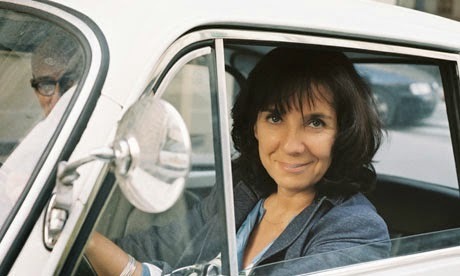 Photo source: From UK Guardian's article, "Stalker, stripper, sleeper, spy" (see here)
Photo source: From UK Guardian's article, "Stalker, stripper, sleeper, spy" (see here)
Whatever the right term, she is famous for being extremely intrusive in other people's lives - for example, introducing herself in a hotel room and photographing the mess left by the guests, turning the set of photos into a work of art. In 2006, she trained a video camera on a dying woman, filming her for days and nights, throughout her agony (she was dying from cancer). She extracted from this film footage a video lasting some 11 minutes - the video isn't about anyone.
It was her mother dying.
Why did she do it? Because, she says, she was afraid she wouldn't be there at the exact moment her mother passed away. Eventually, she created a multi-media installation (with photos, text, memorabilia etc) where the edited video remained the central piece.
Here are the opening minutes of the video:
And this is an extract from the end, you can hear the noise of conversations and see people touching her:
Yet there is no sense of the precise moment when her mother died. The face in profile never moves, as if it were a still photograph.
Starting in 2007, the installation-cum-video toured across Europe and now, seven years later, it has reached America and is shown at the Episcopal Church of the Heavenly Rest in upper Manhattan while the Frieze New York art fair is ongoing on Randall Island (for info, see here).
Why would anyone film the dying? Professor Emma Wilson (University of Cambridge) who has published a book on the matter, titled "Love, Mortality and the Moving Image", notes in an article (here) that such filmmaking can be "palliative" - a way to "organize" death, "giving a sense of control in the face of brute, annihilating emotions".
No doubt, that was Sophie Calle's objective.
I remain however with an uncomfortable sense that, while this may well have considerable therapeutic value for the persons directly concerned by the death, it cannot be considered art - just because an artist sets up a camera trained on a deathbed and gets it running. I know that in contemporary art it is enough for a piece to be declared "art" if the artist says so. But it seems to me that art is about communication, sharing something together as humans, and therefore the audience should also have a say in the matter, before a "piece" can become "art".
The video here, as I'm sure you've noticed yourself, is extremely "rough and raw". No efforts were made to change the viewpoint or do any manipulation. The video fails in one major aspect: it doesn't catch the "decisive moment" (the moment of death) as Henri Cartier-Bresson would have it.
The video floats indecisively on the screen, it comes out in cold colors that could suggest either serenity or melancholy. The dying woman is so still that, if it weren't for someone taking her pulse, you'd wonder whether she's alive at all. The only movements and noise come from the people around her. The woman's total immobility has been interpreted by some as a striking symbol of Death (for example, see Anneleen Masschelein's paper, here).
That the exact moment of death couldn't be "captured" on tape - hence the title of the installation - is viewed as a deep philosophical comment on Death and on the fact that we cannot "understand" it.
Overall, the effect can be eerie, I don't doubt it, but is it art?
Does it "say" something to you?
Emma Wilson from the Department of French in her new book Love, Mortality and the Moving Image - See more at: http://www.cam.ac.uk/research/news/de...
Emma Wilson from the Department of French in her new book Love, Mortality and the Moving Image - See more at: http://www.cam.ac.uk/research/news/de...
Emma Wilson from the Department of French in her new book Love, Mortality and the Moving Image - See more at: http://www.cam.ac.uk/research/news/de... and its creation can be used to organise experience, the editing process allowing a sense of control in the face of brute, annihilating emotions.Professor Emma Wilson - See more at: http://www.cam.ac.uk/research/news/de...
Art and its creation can be used to organise experience, the editing process allowing a sense of control in the face of brute, annihilating emotions.Professor Emma Wilson - See more at: http://www.cam.ac.uk/research/news/de...
Art and its creation can be used to organise experience, the editing process allowing a sense of control in the face of brute, annihilating emotions.Professor Emma Wilson - See more at: http://www.cam.ac.uk/research/news/de... called You Couldn’t Capture DeathCalle called You Couldn’t Capture Death










 Photo source: From UK Guardian's article, "Stalker, stripper, sleeper, spy" (see here)
Photo source: From UK Guardian's article, "Stalker, stripper, sleeper, spy" (see here) Whatever the right term, she is famous for being extremely intrusive in other people's lives - for example, introducing herself in a hotel room and photographing the mess left by the guests, turning the set of photos into a work of art. In 2006, she trained a video camera on a dying woman, filming her for days and nights, throughout her agony (she was dying from cancer). She extracted from this film footage a video lasting some 11 minutes - the video isn't about anyone.
It was her mother dying.
Why did she do it? Because, she says, she was afraid she wouldn't be there at the exact moment her mother passed away. Eventually, she created a multi-media installation (with photos, text, memorabilia etc) where the edited video remained the central piece.
Here are the opening minutes of the video:
And this is an extract from the end, you can hear the noise of conversations and see people touching her:
Yet there is no sense of the precise moment when her mother died. The face in profile never moves, as if it were a still photograph.
Starting in 2007, the installation-cum-video toured across Europe and now, seven years later, it has reached America and is shown at the Episcopal Church of the Heavenly Rest in upper Manhattan while the Frieze New York art fair is ongoing on Randall Island (for info, see here).
Why would anyone film the dying? Professor Emma Wilson (University of Cambridge) who has published a book on the matter, titled "Love, Mortality and the Moving Image", notes in an article (here) that such filmmaking can be "palliative" - a way to "organize" death, "giving a sense of control in the face of brute, annihilating emotions".
No doubt, that was Sophie Calle's objective.
I remain however with an uncomfortable sense that, while this may well have considerable therapeutic value for the persons directly concerned by the death, it cannot be considered art - just because an artist sets up a camera trained on a deathbed and gets it running. I know that in contemporary art it is enough for a piece to be declared "art" if the artist says so. But it seems to me that art is about communication, sharing something together as humans, and therefore the audience should also have a say in the matter, before a "piece" can become "art".
The video here, as I'm sure you've noticed yourself, is extremely "rough and raw". No efforts were made to change the viewpoint or do any manipulation. The video fails in one major aspect: it doesn't catch the "decisive moment" (the moment of death) as Henri Cartier-Bresson would have it.
The video floats indecisively on the screen, it comes out in cold colors that could suggest either serenity or melancholy. The dying woman is so still that, if it weren't for someone taking her pulse, you'd wonder whether she's alive at all. The only movements and noise come from the people around her. The woman's total immobility has been interpreted by some as a striking symbol of Death (for example, see Anneleen Masschelein's paper, here).
That the exact moment of death couldn't be "captured" on tape - hence the title of the installation - is viewed as a deep philosophical comment on Death and on the fact that we cannot "understand" it.
Overall, the effect can be eerie, I don't doubt it, but is it art?
Does it "say" something to you?
Emma Wilson from the Department of French in her new book Love, Mortality and the Moving Image - See more at: http://www.cam.ac.uk/research/news/de...
Emma Wilson from the Department of French in her new book Love, Mortality and the Moving Image - See more at: http://www.cam.ac.uk/research/news/de...
Emma Wilson from the Department of French in her new book Love, Mortality and the Moving Image - See more at: http://www.cam.ac.uk/research/news/de... and its creation can be used to organise experience, the editing process allowing a sense of control in the face of brute, annihilating emotions.Professor Emma Wilson - See more at: http://www.cam.ac.uk/research/news/de...
Art and its creation can be used to organise experience, the editing process allowing a sense of control in the face of brute, annihilating emotions.Professor Emma Wilson - See more at: http://www.cam.ac.uk/research/news/de...
Art and its creation can be used to organise experience, the editing process allowing a sense of control in the face of brute, annihilating emotions.Professor Emma Wilson - See more at: http://www.cam.ac.uk/research/news/de... called You Couldn’t Capture DeathCalle called You Couldn’t Capture Death










Published on May 12, 2014 03:47
May 9, 2014
Why Climate Fiction is Here to Stay
 Climate fiction has gone viral for a very simple reason: it deals with climate change and global warming, issues that are getting worse every year. We've been used to dire reports from the United Nations Intergovernmental Panel on Climate Change for years but now we are getting one, equally somber report from the United States, long the homeland of climate change deniers: the National Climate Assessment, done with 300 experts. It's full of information and has some amazing photos (like the one above illustrating the collapse of ice sheets - now on-going in Greenland and Antarctica and adding to sea level rise - photo source: Paul Souders/Corbis).
Climate fiction has gone viral for a very simple reason: it deals with climate change and global warming, issues that are getting worse every year. We've been used to dire reports from the United Nations Intergovernmental Panel on Climate Change for years but now we are getting one, equally somber report from the United States, long the homeland of climate change deniers: the National Climate Assessment, done with 300 experts. It's full of information and has some amazing photos (like the one above illustrating the collapse of ice sheets - now on-going in Greenland and Antarctica and adding to sea level rise - photo source: Paul Souders/Corbis).Things have never looked so bad, and it's not happening in some distant, unlikely future but right now.
The New York Times reported on it (see here) and got some 1300 comments in just a few hours. One of the commentators (who also happened to be a climate scientist living in Seattle) noted: "We are well on our way to the 6th mass extinction. Shelled animals in the waters off the coast of the Pacific Northwest are showing damage from the ocean's acidity. Unfortunately, people don't get into gear when they hear doomsday pronouncements." (highlighting added)
They don't.
It's hard to imagine, hard to go beyond the raw numbers and the (cold) data (or should I say hot?).
And that's precisely why we need climate fiction - because it works on the emotions.
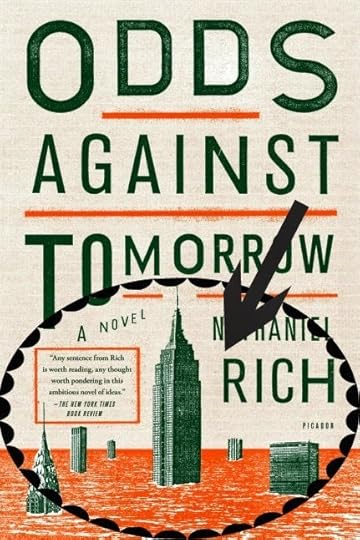 And when you realize the problem is here and now and concerns you, well, it's normal, it makes you sit up!
And when you realize the problem is here and now and concerns you, well, it's normal, it makes you sit up! That's why Nathaniel Rich cli-fi novel Odds Against Tomorrow was eerily spot on. He had imagined New York under water. When his editor at Farrar, Straus and Giroux was finalizing his draft for publication, hurricane Sandy hit New York and all of a sudden, Rich's book didn't at all look like fiction, it looked like social realism!
Take a close look at the book cover (I've added a circle and an arrow) and see what New York could look like in a not-so-distant future after yet another hurricane - because now we know without any shadow of a doubt that extreme weather events will hit us more and more often...
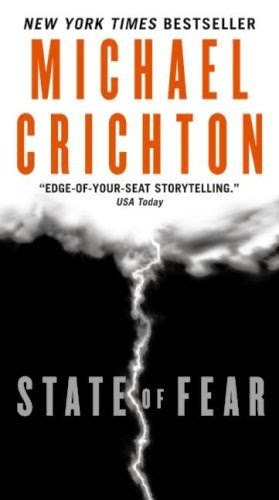 We have certainly covered ground in 10 years!
We have certainly covered ground in 10 years! Think of it, one book by a best-selling 20th century author that was in fact a disruptive and much talked-about climate fiction novel (though it came out in 2004, fully four years before the term cli-fi was coined by Dan Bloom) depicted climate activists as..."eco-terrorists"! Yet it was undoubtedly climate fiction: climate change was its central theme. I am speaking of course of Michael Crichton's State of Fear
This illustrates well how broad a genre climate fiction really is, if it can include a book that is music to the ears of climate deniers. Because that is my point: climate fiction, whether you are denying climate change or believe in it, is here to stay - a constant source of inspiration for writers.
I would also like to add that climate fiction inevitably will include books that go beyond climate change.
Why? Because climate change is but one of the negative trends that will affect our future. The others are well-known and nobody disputes them: an unstoppable population explosion, rapid industrialization especially in developing countries, a world-wide rush to urbanization, increasing income inequality causing social tensions, the multiplication of local wars as weak states struggle to politically emerge and mature in working democracies.
The main point here is that all these trends are inter-linked and interact on each other, reinforcing each one. For example, industrialization of itself wouldn't be so devastating if it wasn't accompanied by rapid urbanization and rising population, etc etc.
So if you try to look at the future and figure out what awaits humanity in the long run, you have to take into account not only climate change but all the other trends as well - which is what I tried to do with my new serial novel Forever Young (Part One and Two are out, Part Three will be released next week.)
How well I've explored the future, how realistic it is, I leave it to you to judge! But do let me know what you think - the future of humanity is one of the most important issues facing us all. How we address it is essential and needs to be debated. If we agree that climate change is but one of our problems, albeit a major one, and that it is linked to a series of other problems, then we need to think about how to address them all...Your views?
Related articles
 Obama dire climate report more certain than ever(usnews.com)
Obama dire climate report more certain than ever(usnews.com)










Published on May 09, 2014 01:21
May 8, 2014
A Five-Star Review by a Major Writer for Just Published FOREVER YOUNG, Part One
Hugely talented writer Bob Rector, author of
Unthinkable Consequences
(I highly recommend it, great romantic thriller) and of the acclaimed play
Letters from the Front
that successfully toured the world for 15 years, has just put my new climate fiction book, FOREVER YOUNG, Part 1, on his list of "hot new reads". This is a serialized novel exploring the future that I believe awaits us all, and three more parts are soon coming up, the next one, Part 2, The Immortality Trip, to be released tomorrow on Amazon (and later on all other e-platforms). Look for it!
I'm deeply honored that Bob singled my work out and his review makes me particularly happy. Here it is:
5-STAR REVIEW OF FOREVER YOUNG PART ONE by Claude Nougat
Update: this morning, another 5-star review was posted on Amazon by author Marsha Roberts, see here
I'm wowed!
And here's the cover of my book:
 Available on all e-platforms; click here for Amazon
Available on all e-platforms; click here for Amazon
BIG NEWS: Drum roll please! Part 2, The Immortality Trip is out! Find out what happens to Alice, Lizzie and Jamie as they are given the chance to fly off to a pristine planet one thousand light years away where humanity can start again...Click here to see it on Amazon and here on Smashwords in the Premium Catalogue, which means it's available on all e-platforms, for the Nook, Kobo and iPad as well as mobile devices.









I'm deeply honored that Bob singled my work out and his review makes me particularly happy. Here it is:
5-STAR REVIEW OF FOREVER YOUNG PART ONE by Claude Nougat
If you’re a boomer and this book doesn’t send a chill up your spine, you’d better check your pulse. I don’t want to give too much away but it’s no spoiler to say that Claude Nougat’s Forever Young series takes place about 200 years from now. Unlike so many stories set in the future, Ms. Nougat creates a very plausible future. Too plausible. Scarily plausible.For the whole post, see here: FOREVER YOUNG by Claude Nougat.
The changes that have taken place on the globe sound eerily prophetic. It’s hard to single out a protagonist. Forever Young is comprised of an ensemble cast, each with conflicting interests. They are all faced with the choice of whether to remain forever young for a hundred or more years or receive a billion dollars.
Thrown into the mix is a quest for true love, family bonds, greed, sculduggery, duplicity, and humans basically behaving at their worst. In other words, some things never change despite all the glittering marvels science can bestow upon us.
Ms. Nougat creates characters that jump off the page at you. Her dialogue is so razor sharp you find yourself sometimes saying “Ouch!” The climax is as hair raising as an old west shoot out. Is there humor? Oh yes, and it’s dark as molasses and just as tasty. You’ll be tempted to lick it right off the page.
As a reader, when I pick up a new book, I want to feel like a mail sack on a railway platform waiting for a speeding train to snatch me away to a new destination. That’s just what Claude Nougat does with this first book in her Forever Young series, Gateway To Forever.
It’s always comforting to be in the hands of a real pro. Ms. Nougat certainly is that. Highly recommended read.
Update: this morning, another 5-star review was posted on Amazon by author Marsha Roberts, see here
I'm wowed!
And here's the cover of my book:
 Available on all e-platforms; click here for Amazon
Available on all e-platforms; click here for AmazonBIG NEWS: Drum roll please! Part 2, The Immortality Trip is out! Find out what happens to Alice, Lizzie and Jamie as they are given the chance to fly off to a pristine planet one thousand light years away where humanity can start again...Click here to see it on Amazon and here on Smashwords in the Premium Catalogue, which means it's available on all e-platforms, for the Nook, Kobo and iPad as well as mobile devices.










Published on May 08, 2014 00:35
May 5, 2014
Putin's Dream: New Russia
A map tells the story better than a thousand words. This is "New Russia" or Novorossiya the way it was after Catherine the Great had extended her empire all the way down to the Black Sea at the end of the 18th century:
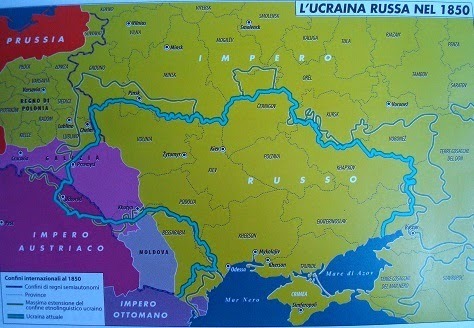
This is a map of the Russian Empire in 1850. Ukraine borders are shown with a blue line. The map comes from a geopolitical magazine I just got in the mail, Limes (April 2014). Their cover, titled "Ukraine between Putin and Us", tells it all:
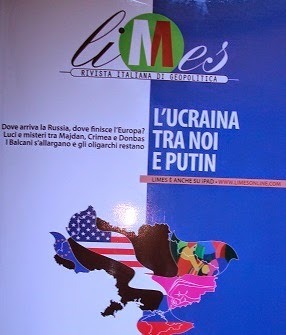
And that of course is the "New Russia" Putin is dreaming of.
The trouble is: he isn't "Catherine", he isn't "great", he's just a small KGB-trained man with Soviet nostalgia.
What does all this mean in terms of the Ukraine crisis?
Obviously, that he won't stop until he's grabbed all of Russophone Ukraine, or at least where the pro-Russians are a majority, i.e. the East AND South (and that means Odessa where protests have recently exploded causing victims). That leaves Kiev alone in its Ukrainian enclave. And as I recently blogged, Putin may soon get help from the Moldovans in Transnistria ( see here).
The solution? Perhaps federalist, but most certainly along the model the Italians followed in Alto Adige a.k.a. South Tyrol, putting to rest the Tyrol question after World War II right down to this day. What that means in practice is giving those russophone territories ample autonomy and self-determination.
Do the "pro-Russian" rebels really want to fall into Moscow's orbit? Nothing is less sure, as pointed out by the New York Times in an article published today, observing that Russophone rebels hold conflicting opinions as to the future they want (they only agree on one thing: their distrust of Kiev). This uncertainly in their objectives - and the rebels' alledged desire to remain independent from Moscow - is something the West should take into account and use pro-actively in any diplomatic negotiation to arrive at a lasting South Tyrol type solution...
Your views?
Related articles Putin's 'Greater Novorossiya': The Dismemberment Of Ukraine - Analysis(eurasiareview.com)
Putin's 'Greater Novorossiya': The Dismemberment Of Ukraine - Analysis(eurasiareview.com)
 On The Edge Of War: The Latest Russian And Ukraine Troop Movements(thesurvivalplaceblog.com)
On The Edge Of War: The Latest Russian And Ukraine Troop Movements(thesurvivalplaceblog.com)











This is a map of the Russian Empire in 1850. Ukraine borders are shown with a blue line. The map comes from a geopolitical magazine I just got in the mail, Limes (April 2014). Their cover, titled "Ukraine between Putin and Us", tells it all:

And that of course is the "New Russia" Putin is dreaming of.
The trouble is: he isn't "Catherine", he isn't "great", he's just a small KGB-trained man with Soviet nostalgia.
What does all this mean in terms of the Ukraine crisis?
Obviously, that he won't stop until he's grabbed all of Russophone Ukraine, or at least where the pro-Russians are a majority, i.e. the East AND South (and that means Odessa where protests have recently exploded causing victims). That leaves Kiev alone in its Ukrainian enclave. And as I recently blogged, Putin may soon get help from the Moldovans in Transnistria ( see here).
The solution? Perhaps federalist, but most certainly along the model the Italians followed in Alto Adige a.k.a. South Tyrol, putting to rest the Tyrol question after World War II right down to this day. What that means in practice is giving those russophone territories ample autonomy and self-determination.
Do the "pro-Russian" rebels really want to fall into Moscow's orbit? Nothing is less sure, as pointed out by the New York Times in an article published today, observing that Russophone rebels hold conflicting opinions as to the future they want (they only agree on one thing: their distrust of Kiev). This uncertainly in their objectives - and the rebels' alledged desire to remain independent from Moscow - is something the West should take into account and use pro-actively in any diplomatic negotiation to arrive at a lasting South Tyrol type solution...
Your views?
Related articles
 Putin's 'Greater Novorossiya': The Dismemberment Of Ukraine - Analysis(eurasiareview.com)
Putin's 'Greater Novorossiya': The Dismemberment Of Ukraine - Analysis(eurasiareview.com)
 On The Edge Of War: The Latest Russian And Ukraine Troop Movements(thesurvivalplaceblog.com)
On The Edge Of War: The Latest Russian And Ukraine Troop Movements(thesurvivalplaceblog.com)










Published on May 05, 2014 07:02
May 2, 2014
Why Science Fiction is Important
This morning Amazon reminded me of what matters in Science Fiction and why it is not useless fantasy but a very serious literary genre that is able to raise deep existential issues and make us think.
Here is what I got in my email box:
 Your Amazon.com
Your Amazon.com
Today's Deals
See All Departments Customers who have shown an interest in classic sci-fi might want to know about this selection of popular Kindle books.
Customers who have shown an interest in classic sci-fi might want to know about this selection of popular Kindle books. 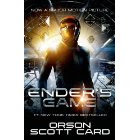 Ender's Game: 1 (The Ender Quintet) Orson Scott Card Price: $6.49
Ender's Game: 1 (The Ender Quintet) Orson Scott Card Price: $6.49

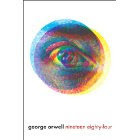 1984 George Orwell Price: $8.46
1984 George Orwell Price: $8.46

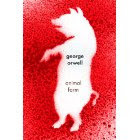 Animal Farm: A Fairy Story George Orwell, Ralph Steadman Price: $7.97
Animal Farm: A Fairy Story George Orwell, Ralph Steadman Price: $7.97

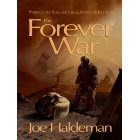 The Forever War Joe Haldeman, John Scalzi Price: $5.37
The Forever War Joe Haldeman, John Scalzi Price: $5.37
Just four book, two historical "classics", Orwell's Animal Farm and 1984 , and two "moderns", both winners of numerous awards, Joe Haldeman's The Forever War and Orson Scott Card's Ender's Game .
It so happens that two of those books are my all-time favorites (Orwell's) and the other two are on my TBR list - I just had samples downloaded to my Kindle...which goes to show how effective Amazon's marketing is.
Just to show you why these four books raise fundamental issues, here are excerpts of the book descriptions. Please note I've just retained the phrases that refer to the issues raised and italicized the high points:
Ender's Game: "In order to develop a secure defense against a hostile alien race's next attack, government agencies breed child geniuses and train them as soldiers. A brilliant young boy, Andrew "Ender" Wiggin lives with his kind but distant parents, his sadistic brother Peter, and the person he loves more than anyone else, his sister Valentine...Ender's skills make him a leader in school and respected in the Battle Room, where children play at mock battles in zero gravity...Yet growing up in an artificial community of young soldiers Ender suffers greatly from isolation, rivalry from his peers, pressure from the adult teachers, and an unsettling fear of the alien invaders." As the Amazon.com review put it: "Yet the reason it rings true for so many is that it is first and foremost a tale of humanity; a tale of a boy struggling to grow up into someone he can respect while living in an environment stripped of choices." (italics added)
The Forever War: "... a science fiction classic that chronicles the life of William Mandella. Due to the time distortion associated with deep space travel, he is present during both the first and the last battle of a thousand year old conflict with the alien Taurans. A masterpiece of not just science fiction, The Forever War illustrates the futility of all wars and their effect on the human soul." (Italics added) As Iain Banks put it, this is a war novel that happens to be science fiction.
Animal Farm: "...classic satire of the Russian Revolution is an intimate part of our contemporary culture. It is the account of the bold struggle, initiated by the animals, that transforms Mr. Jones's Manor Farm into Animal Farm--a wholly democratic society built on the credo that All Animals Are Created Equal...The climax is the brutal betrayal of the faithful horse Boxer, when totalitarian rule is reestablished with the bloodstained postscript to the founding slogan: But some Animals Are More Equal Than Others." (Italics added)
1984: "... a rare work that grows more haunting as its futuristic purgatory becomes more real. Published in 1949, the book offers political satirist George Orwell's nightmare vision of a totalitarian, bureaucratic world and one poor stiff's attempt to find individuality. The brilliance of the novel is Orwell's prescience of modern life--the ubiquity of television, the distortion of the language--and his ability to construct such a thorough version of hell."
It may come as a surprise that Animal Farm was included in this short-list of popular classic science fiction - it is more fantasy and satire than anything else, but it certainly uses the same Orwellian approach to novel-writing: logically extending to its extreme, violent version an observable current trend in human society, which is exactly what he did for 1984. And that is what makes Orwell's writing so effective and frightening. You recognize the world he describes, and he forces you to think through all the implications of what is happening.
The underlying message is this: if you don't stop the trend, that is what will happen. Hell on earth.
That strong warning is at the heart of the other two books as well: the perennial futility and pointlessness of war (The Forever War), the challenge of growing up, of becoming a just person in a world ridden with small-minded jealousy and pettiness (Ender's Game).
Yes, in my view, good science fiction, like good climate fiction, is all about alerting the readers to basic issues that threaten our continued existence on this planet. The debate is around political issues but also around bigger issues, like what is the meaning of civilization? What is at the heart of humanity?
These are very big questions normally associated with literary fiction. Yet science fiction addresses them too and does so with the additional dimension of unbridled imagination - no holds barred, everything is possible! And that makes good science fiction particularly suspenseful and fun to read...
Do you agree? Do you read science fiction and if so, why? What do you get out of it?
Related articles Genre fiction radiates from a literary centre
Genre fiction radiates from a literary centre
 The politics of science fiction
The politics of science fiction
 The Importance of Setting in Science Fiction
The Importance of Setting in Science Fiction
 How To Build The Classics of Science Fiction 4.0 List?
How To Build The Classics of Science Fiction 4.0 List?
 The genre debate: Science fiction travels farther than literary fiction
The genre debate: Science fiction travels farther than literary fiction










Here is what I got in my email box:
 Your Amazon.com
Your Amazon.com Today's Deals
See All Departments
 Customers who have shown an interest in classic sci-fi might want to know about this selection of popular Kindle books.
Customers who have shown an interest in classic sci-fi might want to know about this selection of popular Kindle books.  Ender's Game: 1 (The Ender Quintet) Orson Scott Card Price: $6.49
Ender's Game: 1 (The Ender Quintet) Orson Scott Card Price: $6.49

 1984 George Orwell Price: $8.46
1984 George Orwell Price: $8.46

 Animal Farm: A Fairy Story George Orwell, Ralph Steadman Price: $7.97
Animal Farm: A Fairy Story George Orwell, Ralph Steadman Price: $7.97

 The Forever War Joe Haldeman, John Scalzi Price: $5.37
The Forever War Joe Haldeman, John Scalzi Price: $5.37 Just four book, two historical "classics", Orwell's Animal Farm and 1984 , and two "moderns", both winners of numerous awards, Joe Haldeman's The Forever War and Orson Scott Card's Ender's Game .
It so happens that two of those books are my all-time favorites (Orwell's) and the other two are on my TBR list - I just had samples downloaded to my Kindle...which goes to show how effective Amazon's marketing is.
Just to show you why these four books raise fundamental issues, here are excerpts of the book descriptions. Please note I've just retained the phrases that refer to the issues raised and italicized the high points:
Ender's Game: "In order to develop a secure defense against a hostile alien race's next attack, government agencies breed child geniuses and train them as soldiers. A brilliant young boy, Andrew "Ender" Wiggin lives with his kind but distant parents, his sadistic brother Peter, and the person he loves more than anyone else, his sister Valentine...Ender's skills make him a leader in school and respected in the Battle Room, where children play at mock battles in zero gravity...Yet growing up in an artificial community of young soldiers Ender suffers greatly from isolation, rivalry from his peers, pressure from the adult teachers, and an unsettling fear of the alien invaders." As the Amazon.com review put it: "Yet the reason it rings true for so many is that it is first and foremost a tale of humanity; a tale of a boy struggling to grow up into someone he can respect while living in an environment stripped of choices." (italics added)
The Forever War: "... a science fiction classic that chronicles the life of William Mandella. Due to the time distortion associated with deep space travel, he is present during both the first and the last battle of a thousand year old conflict with the alien Taurans. A masterpiece of not just science fiction, The Forever War illustrates the futility of all wars and their effect on the human soul." (Italics added) As Iain Banks put it, this is a war novel that happens to be science fiction.
Animal Farm: "...classic satire of the Russian Revolution is an intimate part of our contemporary culture. It is the account of the bold struggle, initiated by the animals, that transforms Mr. Jones's Manor Farm into Animal Farm--a wholly democratic society built on the credo that All Animals Are Created Equal...The climax is the brutal betrayal of the faithful horse Boxer, when totalitarian rule is reestablished with the bloodstained postscript to the founding slogan: But some Animals Are More Equal Than Others." (Italics added)
1984: "... a rare work that grows more haunting as its futuristic purgatory becomes more real. Published in 1949, the book offers political satirist George Orwell's nightmare vision of a totalitarian, bureaucratic world and one poor stiff's attempt to find individuality. The brilliance of the novel is Orwell's prescience of modern life--the ubiquity of television, the distortion of the language--and his ability to construct such a thorough version of hell."
It may come as a surprise that Animal Farm was included in this short-list of popular classic science fiction - it is more fantasy and satire than anything else, but it certainly uses the same Orwellian approach to novel-writing: logically extending to its extreme, violent version an observable current trend in human society, which is exactly what he did for 1984. And that is what makes Orwell's writing so effective and frightening. You recognize the world he describes, and he forces you to think through all the implications of what is happening.
The underlying message is this: if you don't stop the trend, that is what will happen. Hell on earth.
That strong warning is at the heart of the other two books as well: the perennial futility and pointlessness of war (The Forever War), the challenge of growing up, of becoming a just person in a world ridden with small-minded jealousy and pettiness (Ender's Game).
Yes, in my view, good science fiction, like good climate fiction, is all about alerting the readers to basic issues that threaten our continued existence on this planet. The debate is around political issues but also around bigger issues, like what is the meaning of civilization? What is at the heart of humanity?
These are very big questions normally associated with literary fiction. Yet science fiction addresses them too and does so with the additional dimension of unbridled imagination - no holds barred, everything is possible! And that makes good science fiction particularly suspenseful and fun to read...
Do you agree? Do you read science fiction and if so, why? What do you get out of it?
Related articles
 Genre fiction radiates from a literary centre
Genre fiction radiates from a literary centre
 The politics of science fiction
The politics of science fiction
 The Importance of Setting in Science Fiction
The Importance of Setting in Science Fiction
 How To Build The Classics of Science Fiction 4.0 List?
How To Build The Classics of Science Fiction 4.0 List?
 The genre debate: Science fiction travels farther than literary fiction
The genre debate: Science fiction travels farther than literary fiction










Published on May 02, 2014 02:38
April 28, 2014
Is There a Book Cover Style for Climate Fiction?
Climate Fiction or cli-fi has inspired a surprisingly wide range of book covers. Look here at what the Cli-Fi Books.com website has put together:

This is very different from standard science fiction fare and should put to rest the argument that cli-fi is a sub-genre of sci-fi.
What is striking about these covers is the unifying focus on humanity and Earth as we know it - but with a menacing twist, usually transmitted with a frightening color filter, often red or green.
Five days ago, I presented to you two covers for my upcoming cli-fi novel Forever Young, asking you to vote for your favorite one and I used both this blog and my mirror blog on Wordpress (see here) to try and get as many votes as possible. Although the sample is small (relatively few votes), the trend was crystal clear, the "full woman" - Alice's portrait - won by a wide margin, two to one. Here she is, watching a fiery sunset on a dying world:
 Part 1 is already available on Amazon here at 99 centsI've already put it up on Amazon (here at 99 cents - it's Part One of a serialized novel in 4 parts - the other episodes will be coming soon, one a week). And in a few days it should be up on all the other e-platforms for your Nook, Kobo or iPad (or any mobile device).
Part 1 is already available on Amazon here at 99 centsI've already put it up on Amazon (here at 99 cents - it's Part One of a serialized novel in 4 parts - the other episodes will be coming soon, one a week). And in a few days it should be up on all the other e-platforms for your Nook, Kobo or iPad (or any mobile device).
Other news: today Crimson Clouds is exceptionally up for sale at 99 cents. Grab your copy quick here, because tomorrow it will go back to it's original price of $3.99.
Again, many thanks for the support, I'm very grateful to all those who have voted!











This is very different from standard science fiction fare and should put to rest the argument that cli-fi is a sub-genre of sci-fi.
What is striking about these covers is the unifying focus on humanity and Earth as we know it - but with a menacing twist, usually transmitted with a frightening color filter, often red or green.
Five days ago, I presented to you two covers for my upcoming cli-fi novel Forever Young, asking you to vote for your favorite one and I used both this blog and my mirror blog on Wordpress (see here) to try and get as many votes as possible. Although the sample is small (relatively few votes), the trend was crystal clear, the "full woman" - Alice's portrait - won by a wide margin, two to one. Here she is, watching a fiery sunset on a dying world:
 Part 1 is already available on Amazon here at 99 centsI've already put it up on Amazon (here at 99 cents - it's Part One of a serialized novel in 4 parts - the other episodes will be coming soon, one a week). And in a few days it should be up on all the other e-platforms for your Nook, Kobo or iPad (or any mobile device).
Part 1 is already available on Amazon here at 99 centsI've already put it up on Amazon (here at 99 cents - it's Part One of a serialized novel in 4 parts - the other episodes will be coming soon, one a week). And in a few days it should be up on all the other e-platforms for your Nook, Kobo or iPad (or any mobile device).Other news: today Crimson Clouds is exceptionally up for sale at 99 cents. Grab your copy quick here, because tomorrow it will go back to it's original price of $3.99.
Again, many thanks for the support, I'm very grateful to all those who have voted!










Published on April 28, 2014 06:24
April 26, 2014
Ukraine Crisis: After Crimea, Moldova?
The world is watching with bated breath the crisis unfold in Eastern Ukraine as pro-Russian self-appointed militia men appear to prepare the ground for a Russian invasion. Yet Putin's next move could well be in quite another place: in tiny Moldova, population 4 million, most of them pro-West except for the Russian-speaking eastern region of Transnistria.
This slow-brewing crisis is now coming to a head, with Transnistria ready to secede from Moldova and asking to join Russia - a perfect repeat of the Crimea scenario.
Why should Putin heed Transnistria's call?
First, because it falls right into the grand Putin scheme of rebuilding Greater Russia, pulling together under the Kremlin's sway all Russophones across Europe.
Second, because of geo-political reasons, it comes at exactly the right time. It provides Putin with the perfect pretext for attempting to control Southern Ukraine - which is precisely what is needed to obtain direct Russian access to Crimea. Take a look at the map. Here is Transnistria:
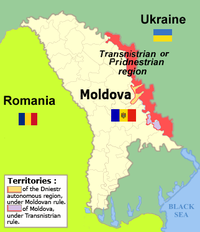
And here's Southern Ukraine (the red and brown areas):
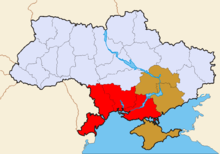
What Putin is dreaming of is this (note that this is a map showing the Russian Empire ca.1897):

Obviously Ukraine will never allow Putin to control its own access to the Black Sea. Yet, because of major economic interests, in particular Russia's gas, Putin can never give up control over the sea. He needs direct access to Sebastopol, the major Russian military port in Crimea.
So we could soon have a new front in the south. This is like a game of chess - though much more dangerous, a wong move can precipate war.
Your thoughts?
Related articles Moldova's President Repeats Calls For Russia To Leave Transdniestr
Moldova's President Repeats Calls For Russia To Leave Transdniestr
 Is war inevitable in Ukraine?
Is war inevitable in Ukraine?
 Russia Wants World War Three, Says Ukraine
Russia Wants World War Three, Says Ukraine
 Op-Ed Columnist: Moldova, the Next Ukraine
Op-Ed Columnist: Moldova, the Next Ukraine










This slow-brewing crisis is now coming to a head, with Transnistria ready to secede from Moldova and asking to join Russia - a perfect repeat of the Crimea scenario.
Why should Putin heed Transnistria's call?
First, because it falls right into the grand Putin scheme of rebuilding Greater Russia, pulling together under the Kremlin's sway all Russophones across Europe.
Second, because of geo-political reasons, it comes at exactly the right time. It provides Putin with the perfect pretext for attempting to control Southern Ukraine - which is precisely what is needed to obtain direct Russian access to Crimea. Take a look at the map. Here is Transnistria:

And here's Southern Ukraine (the red and brown areas):

What Putin is dreaming of is this (note that this is a map showing the Russian Empire ca.1897):

Obviously Ukraine will never allow Putin to control its own access to the Black Sea. Yet, because of major economic interests, in particular Russia's gas, Putin can never give up control over the sea. He needs direct access to Sebastopol, the major Russian military port in Crimea.
So we could soon have a new front in the south. This is like a game of chess - though much more dangerous, a wong move can precipate war.
Your thoughts?
Related articles
 Moldova's President Repeats Calls For Russia To Leave Transdniestr
Moldova's President Repeats Calls For Russia To Leave Transdniestr
 Is war inevitable in Ukraine?
Is war inevitable in Ukraine?
 Russia Wants World War Three, Says Ukraine
Russia Wants World War Three, Says Ukraine
 Op-Ed Columnist: Moldova, the Next Ukraine
Op-Ed Columnist: Moldova, the Next Ukraine










Published on April 26, 2014 03:08
April 23, 2014
Masterpiece, Italy's Reality TV Show for Writers: Last Act and a Small Miracle
Publishing Perspectives just published my most recent article about the Italian Reality TV show for writers (see here) and I'm happy to share it with you:
Italy’s TV Reality Show Ignored Psychology of AuthorsRead more by Guest Contributor
April 21, 2014
Italy’s “Masterpiece” TV reality show for writers failed to attract viewers, in part, because it didn’t account for the way writers empathize with others.By Claude Nougat
On March 30, the RAI 3 reality TV show Masterpiece promoted by the publisher Bompiani to find the “Next Big Italian Writer” ended with an unlikely winner, a Serb who lives in Venice: 36 year-old Nikola Savic.
Last week, on April 16, his winning book, Vita Migliore, was published in 100,000 copies and distributed to the libraries across Italy.
Two weeks to produce and distribute a printed book must be something of a Guinness record for a traditional publisher – as we all know, publishers usually require a minimum of six months to properly edit and produce a printed book.
A veritable miracle? Perhaps.
I reported on Masterpiece when the show started in the fall. By December 2013, it was suspended (presumably due to low ratings), but by then Nikola Savic, a tall, hefty Serb with a quick smile, was already very much in the public eye. He must have been in Bompiani’s eye as well.
The show resumed for four weekly sessions in March, and churned through some 12 candidates at a fast clip – a rate twice as fast as in the fall. For the final episode, on March 30, five candidates were still in competition.
That evening, the winner was selected by a deciding vote from Ms. Elisabetta Sgarbi, the Bompiani Senior Editor. In explaining her vote, she noted that Mr. Savic’s book needed some additional editing, that this was “important” because of grammatical errors and awkwardness in the language (she delicately called it “aritmie”). This is probably to be expected from someone for whom Italian is not the mother tongue. “It was an uphill choice,” she said, discarding the other candidate, a woman, Raffaella Silvestri, whose book still sounded quite attractive.
Certainly an uphill choice and possibly a brave one.
On the other hand, we may have been given a preview of how Bompiani worked its minor miracle of such a quick turn around on Savic’s book publication, for when Ms. Sgarbi walked up to Savic on the podium to congratulate him, she brought to him… a printed copy of his book:
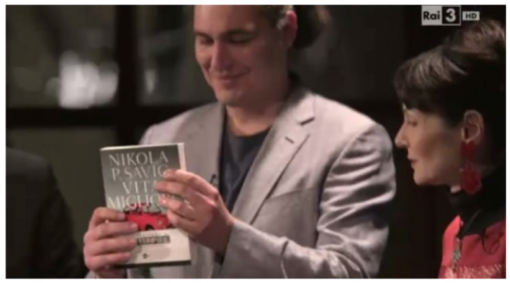
Nikola Savic, the winner of Masterpiece, with Elisabetta Sgarbi, Bompiani’s Senior Editor
Yes, that’s his book. It seems it was already in print on March 30th. Or maybe not? Perhaps that was just the cover and the inside pages were blank…An alternative (and more probable) explanation is that the whole show was probably shot in a few weeks back in the fall (this is normally done for Reality TV shows to save money) and that Bompiani knew by November who the winner was. So they had in fact some five months to produce the book. Minor miracle explained!
With respect to the show’s declared objectives—to raise public awareness of writing and writers—one can only regret the way it went. As reported in the local press, it attracted few viewers and fell well below the average for Italian reality TV talent shows.
It certainly once again raises the question of whether writers can be fodder for TV shows. Aren’t they better off left in their ivory towers?
Looking back on this show, several mistakes were made at the outset, chief among them not allowing the winner of one session to carry over to the next, thus losing a chance to get viewers more involved in the fate of contenders. Efforts were made to get contenders to “fight” among themselves, for example, in the last session, a couple of contenders were asked to give the most negative opinion they could think up about each other’s book. It was not a pretty sight. Such efforts however seemed to have backfired and whenever one lost, the other rushed to embrace and console the loser. As was done here:
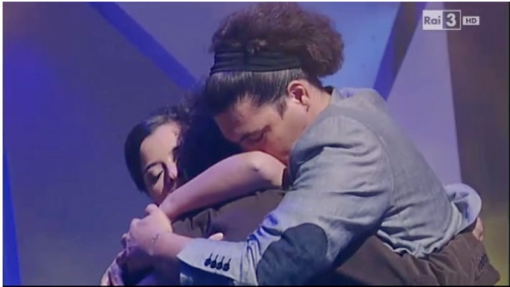
The loser Vargas is consoled by the contenders Nikola Savic and Raffaela Silvestri.
The savagery of classical talent shows didn’t appear to carry over to the writers. It would seem that the kind of uncivilized behavior exhibited in other reality show was difficult, if not impossible, to extract from the writers. Writers are by trade intellectuals who tend to empathize with others, itself an asset in dreaming up their characters and constructing their plots. There is no question that a reality show for writers should take into account the particular mental predisposition of writers who are, when all is said and done, very different people…or they wouldn’t write at all.
In short, no one has yet come up with a successful TV show featuring writers and Masterpiece certainly failed in this respect. If such a show is ever to succeed, more attention will need to be given in future to the way writers think and react.
On the other hand, if the objective of the show was to unearth the Next Big Writer, then more importance should have been given to the opinion of the audience. In the last session, an interesting effort was made to put together an audience in the studio and inform them in advance of the books competing as finalists (through synopsis and excerpts) and get the finalists to pitch their books directly to them, as was done here, with each contender supported by a well-known Italian author:
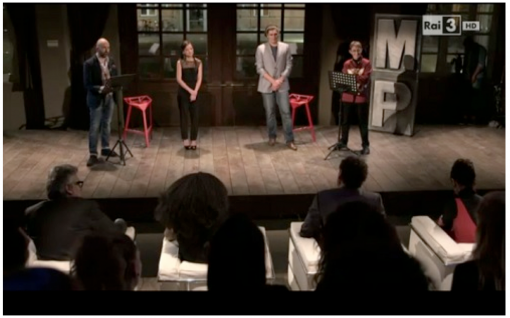
Last challenge in front of the jury and a crowd of invited onlookers; the contenders are supported by major writers, on the right, Savic by Susanna Tamaro and Raffaella Silvestri by Donato Carrisi.
After the performance, the audience was asked to vote and they favored Raffaella Silvestri over Nikola Savic. Nevertheless, the Masterpiece judges (Andrea De Carlo, Giancarlo De Cataldo and Taiye Selasi) voted for Savic and so did Bompiani’s editor, thus disregarding the opinion of the public. This was a lost opportunity to take into account what people think and like.
No doubt, Bompiani and the TV producers will carefully review the results of this show and draw some lessons. We can only hope for a better show the next time around.
A closing comment: I'd like to add that, overall, I feel this is a promising formula for attracting the general public's attention to books and I'm sure that in future we'll see smashing shows that will generate interest in writers and the world of publishing.
Your opinion? Related articles Op-Ed Contributor: A Ray of Literary Hope on Italian TV
Op-Ed Contributor: A Ray of Literary Hope on Italian TV
 Masterpiece: Can a Reality TV Show Help Writers and Boost Reading?
Masterpiece: Can a Reality TV Show Help Writers and Boost Reading?
 Masterpiece: Italy's new literary talent show
Masterpiece: Italy's new literary talent show
 Fremantle Italia's Business Model Focuses on Format, Puts Corporate Sponsorship Into Budget Mix
Fremantle Italia's Business Model Focuses on Format, Puts Corporate Sponsorship Into Budget Mix










Italy’s TV Reality Show Ignored Psychology of AuthorsRead more by Guest Contributor
April 21, 2014
Italy’s “Masterpiece” TV reality show for writers failed to attract viewers, in part, because it didn’t account for the way writers empathize with others.By Claude Nougat
On March 30, the RAI 3 reality TV show Masterpiece promoted by the publisher Bompiani to find the “Next Big Italian Writer” ended with an unlikely winner, a Serb who lives in Venice: 36 year-old Nikola Savic.
Last week, on April 16, his winning book, Vita Migliore, was published in 100,000 copies and distributed to the libraries across Italy.
Two weeks to produce and distribute a printed book must be something of a Guinness record for a traditional publisher – as we all know, publishers usually require a minimum of six months to properly edit and produce a printed book.
A veritable miracle? Perhaps.
I reported on Masterpiece when the show started in the fall. By December 2013, it was suspended (presumably due to low ratings), but by then Nikola Savic, a tall, hefty Serb with a quick smile, was already very much in the public eye. He must have been in Bompiani’s eye as well.
The show resumed for four weekly sessions in March, and churned through some 12 candidates at a fast clip – a rate twice as fast as in the fall. For the final episode, on March 30, five candidates were still in competition.
That evening, the winner was selected by a deciding vote from Ms. Elisabetta Sgarbi, the Bompiani Senior Editor. In explaining her vote, she noted that Mr. Savic’s book needed some additional editing, that this was “important” because of grammatical errors and awkwardness in the language (she delicately called it “aritmie”). This is probably to be expected from someone for whom Italian is not the mother tongue. “It was an uphill choice,” she said, discarding the other candidate, a woman, Raffaella Silvestri, whose book still sounded quite attractive.
Certainly an uphill choice and possibly a brave one.
On the other hand, we may have been given a preview of how Bompiani worked its minor miracle of such a quick turn around on Savic’s book publication, for when Ms. Sgarbi walked up to Savic on the podium to congratulate him, she brought to him… a printed copy of his book:

Nikola Savic, the winner of Masterpiece, with Elisabetta Sgarbi, Bompiani’s Senior Editor
Yes, that’s his book. It seems it was already in print on March 30th. Or maybe not? Perhaps that was just the cover and the inside pages were blank…An alternative (and more probable) explanation is that the whole show was probably shot in a few weeks back in the fall (this is normally done for Reality TV shows to save money) and that Bompiani knew by November who the winner was. So they had in fact some five months to produce the book. Minor miracle explained!
With respect to the show’s declared objectives—to raise public awareness of writing and writers—one can only regret the way it went. As reported in the local press, it attracted few viewers and fell well below the average for Italian reality TV talent shows.
It certainly once again raises the question of whether writers can be fodder for TV shows. Aren’t they better off left in their ivory towers?
Looking back on this show, several mistakes were made at the outset, chief among them not allowing the winner of one session to carry over to the next, thus losing a chance to get viewers more involved in the fate of contenders. Efforts were made to get contenders to “fight” among themselves, for example, in the last session, a couple of contenders were asked to give the most negative opinion they could think up about each other’s book. It was not a pretty sight. Such efforts however seemed to have backfired and whenever one lost, the other rushed to embrace and console the loser. As was done here:

The loser Vargas is consoled by the contenders Nikola Savic and Raffaela Silvestri.
The savagery of classical talent shows didn’t appear to carry over to the writers. It would seem that the kind of uncivilized behavior exhibited in other reality show was difficult, if not impossible, to extract from the writers. Writers are by trade intellectuals who tend to empathize with others, itself an asset in dreaming up their characters and constructing their plots. There is no question that a reality show for writers should take into account the particular mental predisposition of writers who are, when all is said and done, very different people…or they wouldn’t write at all.
In short, no one has yet come up with a successful TV show featuring writers and Masterpiece certainly failed in this respect. If such a show is ever to succeed, more attention will need to be given in future to the way writers think and react.
On the other hand, if the objective of the show was to unearth the Next Big Writer, then more importance should have been given to the opinion of the audience. In the last session, an interesting effort was made to put together an audience in the studio and inform them in advance of the books competing as finalists (through synopsis and excerpts) and get the finalists to pitch their books directly to them, as was done here, with each contender supported by a well-known Italian author:

Last challenge in front of the jury and a crowd of invited onlookers; the contenders are supported by major writers, on the right, Savic by Susanna Tamaro and Raffaella Silvestri by Donato Carrisi.
After the performance, the audience was asked to vote and they favored Raffaella Silvestri over Nikola Savic. Nevertheless, the Masterpiece judges (Andrea De Carlo, Giancarlo De Cataldo and Taiye Selasi) voted for Savic and so did Bompiani’s editor, thus disregarding the opinion of the public. This was a lost opportunity to take into account what people think and like.
No doubt, Bompiani and the TV producers will carefully review the results of this show and draw some lessons. We can only hope for a better show the next time around.
A closing comment: I'd like to add that, overall, I feel this is a promising formula for attracting the general public's attention to books and I'm sure that in future we'll see smashing shows that will generate interest in writers and the world of publishing.
Your opinion? Related articles
 Op-Ed Contributor: A Ray of Literary Hope on Italian TV
Op-Ed Contributor: A Ray of Literary Hope on Italian TV
 Masterpiece: Can a Reality TV Show Help Writers and Boost Reading?
Masterpiece: Can a Reality TV Show Help Writers and Boost Reading?
 Masterpiece: Italy's new literary talent show
Masterpiece: Italy's new literary talent show
 Fremantle Italia's Business Model Focuses on Format, Puts Corporate Sponsorship Into Budget Mix
Fremantle Italia's Business Model Focuses on Format, Puts Corporate Sponsorship Into Budget Mix










Published on April 23, 2014 23:44



